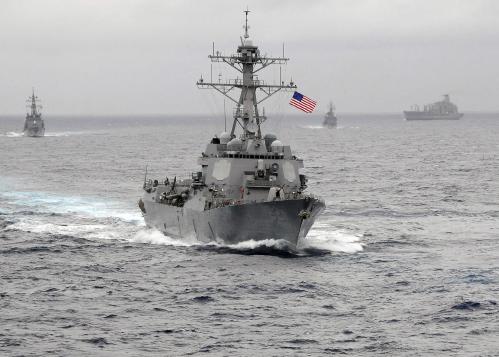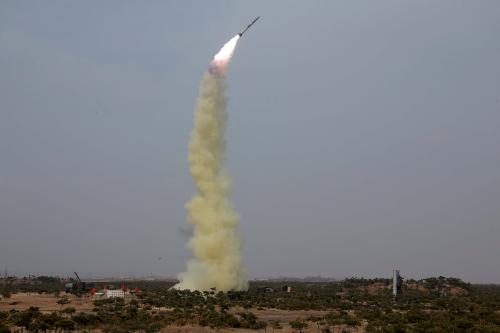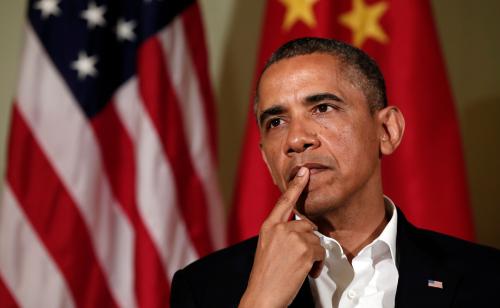In the last two weeks, an Afghan police officer killed two American Marines in Helmand Province, and another killed a British soldier after a dispute over a soccer match. Last month, an Afghan military pilot killed nine American military trainers after an argument at a meeting in Kabul.
None of the killers seem to have been Taliban infiltrators, but that alone is not terribly reassuring. The United States’ exit strategy for the war in Afghanistan depends largely on the performance, competence and trustworthiness of the Afghan security forces, and critics of the mission view such episodes as evidence that the Afghan forces are generally unreliable — ineffectual in combat and too often unmotivated, erratic or corrupt. The issue looms over President Obama’s decision about troop reductions in Afghanistan, which he is expected to announce by July.
But there is reason to be hopeful. I was in Helmand Province last week, traveling with Gen. James F. Amos, the commandant of the Marine Corps, and despite the recent setbacks and other problems, my impression of today’s Afghan security forces was encouraging.
Helmand Province, for years a Taliban stronghold, has in the past year or so seen remarkable progress. Almost all of the populated parts of the province are now under the control of the Afghan government and the NATO-led International Security Assistance Force.
The region is not completely safe, to be sure. But most major roads are serviceable, and government officials now generally use them instead of NATO helicopters to get around. Markets are open; schools have increased almost 50 percent in number since late 2009; twice as many Afghan officials work in local governments as did a year ago; and poppy production is down.
The even better news is that Afghan forces deserve an increasingly large share of the credit. The message from the Marines and British soldiers I spoke to in the province was one of growing appreciation for the skills and fighting spirit of Afghan soldiers and police officers.
Last year in southern Afghanistan, Afghans made up about half of all the combined forces used to clear the region of most Taliban weapons caches and strongholds. According to the International Security Assistance Force, roughly two-thirds of all Afghan Army battalions nationwide now score at least a 3 on a military-readiness scale from 1 to 5, meaning that while they still require outside help, they are quite effective when conducting missions with NATO troops.
Police and army pay is now adequate by national standards, and local recruiting goals for the Afghan Army and police in Helmand Province have been largely met this spring for the first time since the war began. Desertion rates are still too high, and Afghan troops too often overstay their military leaves, but the trends point in the right direction.
During my travels, several Marine officers who also had experience in Iraq told me that Afghan police officers and soldiers were better fighters than their Iraqi counterparts. Routinely, in towns like Musa Qala that are still tense, Afghans provide half the personnel on most foot patrols — and I was told that they do not shrink from fighting when they run into trouble.
I heard many anecdotes that spoke to the growing effectiveness of the Afghan forces. Recently, for instance, in the town of Marja, intelligence indicated the presence of Taliban forces in the vicinity. An Afghan unit responsible for that sector leaped into action. A few hours later it returned with Taliban captives.
The unit’s American partners told me that they would have preferred more of a plan — the Afghan forces were somewhat reckless in their response. But the important point was that the Afghans did not avoid combat or expect NATO soldiers to do their fighting for them.
Does this mean the United States should prepare for an immediate drawdown of troops?
No. What I saw and heard in Helmand Province supports the exit strategy — but not for this summer or fall.
An American commander told me that in his estimation, after an area is first cleared of the Taliban, NATO can substantially draw down its forces there 24 to 30 months later. That gives NATO enough time to recruit and train Afghan Army and police units, allows Afghan citizens to gain confidence that the Taliban is not coming back and gives the civilian government a chance to get off the ground. The time frame implies significantly reduced NATO forces in southern Afghanistan by next year.
In the aftermath of Osama bin Laden’s death, many Americans have argued that the country should cut its losses in Afghanistan and bring our troops home. But while the United States does need a better political and diplomatic strategy for the mission (in particular, for dealing with Kabul and Islamabad), this is not the time to jettison a military strategy that has finally hit its stride.
The Brookings Institution is committed to quality, independence, and impact.
We are supported by a diverse array of funders. In line with our values and policies, each Brookings publication represents the sole views of its author(s).



Commentary
Op-edThe Afghan Army: Finally a Fighting Force
May 21, 2011